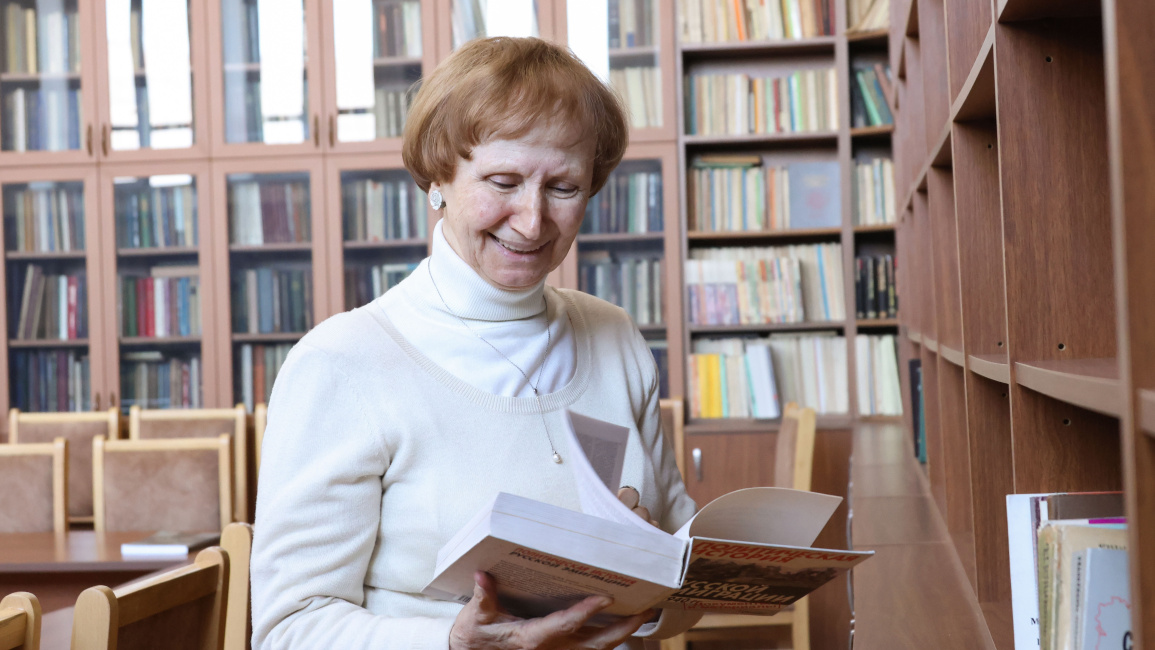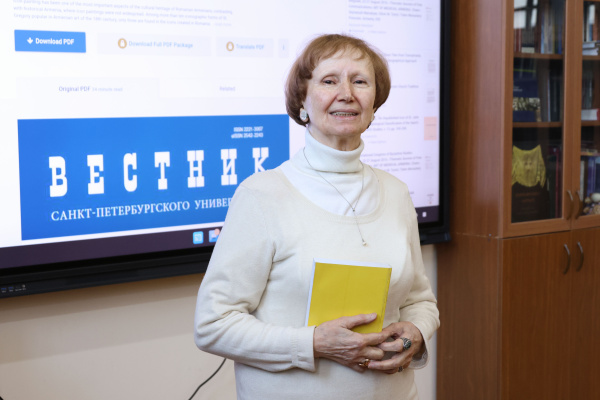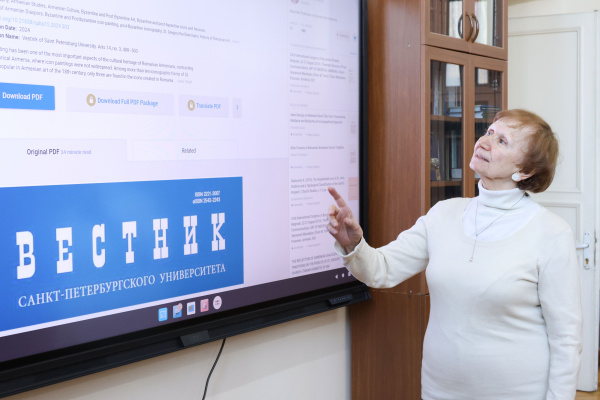February 20, 2025 | 12:00
Research
Publications and scientific journals
Images of St. Gregory the Illuminator in Armenian-Romanian icon painting: Article by YSU researcher published in a prestigious international journal
Armenian communities of Romania have a rich cultural heritage in iconography. Particularly valuable are the icon paintings created by Romanian-Armenian masters, both for their style and iconography. Seyranush Manukyan, Associate Professor at the Chair of Armenian Art History and Theory at YSU Faculty of History, and her PhD student Shoghakat Devrikyan have studied the icons of St. Gregory the Illuminator in Armenian-Romanian iconography, which were created between the 16th and 19th centuries. Their article on this topic has been published in the internationally renowned journal "Vestnik of St. Petersburg University".

The ecclesiastical artworks gathered from the Armenian churches and museums of Romania, particularly the iconography, have become the subject of detailed study for Seyranush Manukyan. According to her, the art of iconography in medieval Armenia was not well-developed: "The art of iconography in medieval Armenia was not developed because the Armenian Church considered depicting saints on wood as a form of idol worship. However, we have had icons in miniatures and frescoes."
For over ten years, Seyranush Manukyan, who has been studying iconography, shared her research on the depictions of Gregory the Illuminator.
The First Icon of Gregory the Illuminator
The iconography of Gregory the Illuminator begins at the end of the 9th century. He was not only the first Patriarch of the Armenians but also the only Armenian saint of the Universal Church until the Council of Chalcedon and the division of the churches.

The first icon of Gregory the Illuminator was presented in Byzantine art. This icon was placed on the southern wall of the second floor of the Hagia Sophia in Constantinople, alongside the images of other ecumenical saints. However, when the Turkish army captured the Byzantine capital of Constantinople in 1453, the Hagia Sophia was converted into a mosque, and the icons were covered with plaster. It was only in the 19th century that specialists were allowed to uncover the icons and copy them. Unfortunately, after being uncovered, the images of Gregory the Illuminator and several other saints began to deteriorate. Today, the Christian cathedral of Hagia Sophia, which functioned as a museum for many years in the 20th century, has once again been turned into a mosque.
The Image of Gregory the Illuminator in Armenian Art
In the Middle Ages, particularly from the 15th century onwards, the depiction of Gregory the Illuminator also developed in Armenian art, initially in miniatures. We primarily find representations of St. Gregory in Armenian liturgical collections—mainly in the miniatures of the Haysmavurk manuscripts—where he is depicted alone, in symbolic forms, in the margins, as an authorial portrait, alongside the text. Later, during the 17th-19th centuries, the portrait of Gregory the Illuminator is also found in iconography as well.
The art of iconography developed relatively late among us. Armenian artists began creating icons mainly from the 17th century in Armenian diasporas—particularly in Jerusalem, Constantinople, the territory of the Polish-Lithuanian Commonwealth, especially in Lviv and Romania, and also in Etchmiadzin. These icons were typically painted with oil paints on canvas, using the classical techniques of the Eastern Orthodox churches.
The art of iconography among the Armenians of Romania began in the 16th century and gained significant recognition and spread during the 17th-19th centuries. These icons were primarily created using the classical Byzantine, Russian, and Romanian iconographic techniques—on wood, with a gesso base layer, and tempera. In more recent times, oil paints have also been used. The Armenian icons of Romania are preserved in the numerous Armenian churches of Romania, as well as in museums, adorning both the altars and the walls of the churches from top to bottom.
The Armenian community in Romania has a centuries-old history, with the first mention of the Armenians in Romania dating back to 1350.
The Four Iconographic Schemes of Gregory the Illuminator in Romanian-Armenian Art

In the Middle Ages, the icons created by Armenian artists in Romania, depicting Gregory the Illuminator, feature four iconographic schemes. The first scheme shows Gregory the Illuminator depicted alone, in full length. The second, which is the most common, depicts Gregory the Illuminator baptizing King Tiridates III the Great (and his family), during whose reign Christianity was adopted as the state religion of Armenia. In these icons, King Tiridates, his wife Ashkhen, and his sister Khosrovidukht are often shown. In some depictions of the baptism of Tiridates III, courtiers and soldiers are also visible. The third iconographic scheme presents Gregory the Illuminator in scenes of his life, illustrating the trials he endured and his sanctification. In these icons, Gregory the Illuminator is at the center, with scenes of his life shown in rectangular frames around him. The fourth scheme features an image of the Virgin Mary with two saints, one of whom is Gregory the Illuminator.
The icons were created in various artistic styles—Baroque, Classicism, and Realism—reflecting the art of the respective time periods and environments. Although they differ in style, they are united by their iconography and themes.
Icons of Gregory the Illuminator with the same iconography were also created in other Armenian diasporas, as well as in Etchmiadzin, but in different styles.
In different countries, for instance in Italy, there are also icons of Gregory the Illuminator with different iconographic styles.
The First Icon of Gregory the Illuminator as the Prototype
In medieval iconography, the attire and attributes of Gregory the Illuminator were inspired by the example of the Hagia Sophia Cathedral. In the icon on the wall of Hagia Sophia, Gregory the Illuminator was depicted alone.
Studies have revealed the names of several Armenian artists from Romania who were involved in the art of iconography. The names of Armenian patrons of icons have also been uncovered, as well as the names of the churches to which the icons were donated. Some icons have been identified that were created by Greek and Romanian artists for Armenian churches, following the previously mentioned Armenian iconographic variations. The image of St. Gregory the Illuminator was one of the mandatory icons found in the Armenian churches of the diasporas.











